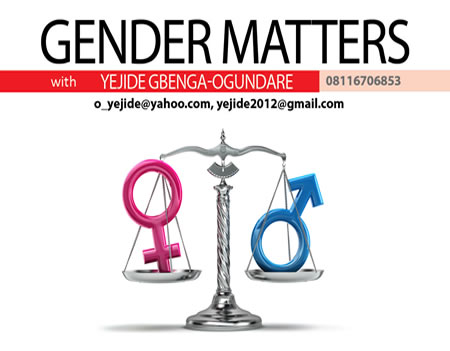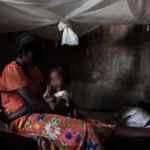Research indicates that every six hours, a woman is killed by an intimate partner. Indeed, it has been proved over time that all forms of violence are in most cases perpetrated by people who are intimate or familiar with the victims. The issue of violence against women has become a major one on the international scene and has become one that the average individual has heard about even if they do not understand the concept.
However, there is a term that is still alien to many people, including women advocates. Femicide is a major issue that many do not understand despite being a term that has been around for long. What is femicide? It is one of the extreme manifestations of violence against women but remains unknown or is beyond the comprehension of many.
And it has been defined and explained in diverse contexts; rape and other sexual violence, intimate partner violence, stranger violence and murders associated with gang activity and political violence among others. Femicide simply refers to the killing of women and girls because of their gender and it manifests in various extreme forms; killing of women and girls in the name of ‘honour’, murder of women as a result of intimate partner violence, killing of women and girls because of their sexual orientation and gender identity, female infanticide and gender-based sex selection foeticide and torture as well as misogynist slaying of women.
It can also appear in the form of targeted killing of women and girls in the context of armed conflict, accusations of witchcraft, genital mutilation related deaths, dowry-related killings of women, killing of aboriginal and indigenous women and girls because of their gender as well as other femicides connected with gangs, organised crime, drug dealing, human trafficking and the proliferation of small arms.
Often, the killing of a woman by an intimate partner and the death of a woman as a result of harmful tradition practices like widowhood practice forms the basis of femicide, a concept publicly introduced by Diana Russell, while testifying about murders of women at the International Tribunal on Crimes Against Women in Brussels, Belgium in 1976, but she did not define it then in explicit terms.
But later in 1992, Russell and Jill Radford then clearly defined femicide as the misogynistic killing of women by men. In addition, Radford specifically identified femicide as a form of sexual violence. And as time went by, in 1998, a new definition emerged through Jacquelyn Campbell and Carol Runyan, who gave a new definition to the concept; the definition was amended and it was defined as all killings of women, regardless of motive or perpetrator status.
On the African continent, except in South Africa, what is common is violence against women and girls; few people look at femicide as an issue. But femicide is real, a write-up by dw.com states that the number of cases of sexualised violence and femicide in Africa rose during the COVID-19 pandemic and it is not certain that those in power will finally get aware of the extent of the problem.
The United Nations refers to femicide and violence against women as a ‘shadow pandemic’ that has increased in the past months across Africa and the globe and a major factor attributed for the spike is the coronavirus pandemic. Nigeria also saw an increase in sexual violence during the curfews and Jean Paul Murunga of the women’s rights organization Equality Now, confirmed that the situation was already bad for women before the pandemic and the pandemic merely lifted the veil from what was not being seen, adding that “it doesn’t mean the problem wasn’t there; it was there, and this helps open the government’s eyes to the real situation.”
And till now, efforts against gender-based violence have been ineffective across the African continent and legislations have in no way helped to address issues of prevention, protection, accountability, support and healing. For example, in Nigeria, Kaduna State introduced a law which allows for rapists of children under the age of 14 to be chemically castrated and all state governors declared a state of emergency due to gender-based violence.
What can be said to be responsible for this? Factors highlighted include women’s subordinate roles which was put in place by tradition and patriarchy which gives strength and power to men and pushes women to the sidelines.
It is also as a result of unfounded beliefs that women are weak and easily disposed of and the fact that there is little political will towards advancing gender equality.
To reduce unnecessary death, femicide must be taken seriously in the society.
YOU SHOULD NOT MISS THESE HEADLINES FROM NIGERIAN TRIBUNE
We Have Not Had Water Supply In Months ― Abeokuta Residents
In spite of the huge investment in the water sector by the government and international organisations, water scarcity has grown to become a perennial nightmare for residents of Abeokuta, the Ogun State capital. This report x-rays the lives and experiences of residents in getting clean, potable and affordable water amidst the surge of COVID-19 cases in the state…When love kills When love kills
Selfies, video calls and Chinese documentaries: The things you’ll meet onboard Lagos-Ibadan train
The Lagos-Ibadan railway was inaugurated recently for a full paid operation by the Nigerian Railway Corporation after about a year of free test-run. Our reporter joined the train to and fro Lagos from Ibadan and tells his experience in this report…When love kills When love kills
WATCH TOP VIDEOS FROM NIGERIAN TRIBUNE TV
- Let’s Talk About SELF-AWARENESS
- Is Your Confidence Mistaken for Pride? Let’s talk about it
- Is Etiquette About Perfection…Or Just Not Being Rude?
- Top Psychologist Reveal 3 Signs You’re Struggling With Imposter Syndrome
- Do You Pick Up Work-Related Calls at Midnight or Never? Let’s Talk About Boundaries






